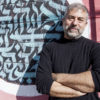“Sometimes rupture is necessary and holy. Sometimes disruption is an essential spiritual practice.” In parashat Ki Tissa, we encounter one of the pivotal moments of tension in the Torah. After spending forty days and nights on Mount Sinai, Moses descends, carrying the gift of God’s words on two tablets. As he gets closer to his reunion with the Israelites, he realizes they have constructed an idol and are gathered to worship this golden calf. In his anger, he throws down the tablets, destroying the tangible evidence of God’s relationship with this difficult nation. After some negotiating on their behalf by Moses, God calls Moses back up the mountain to repeat the process. At one point, discussing the first set, God refers to them as the tablets “which you broke, asher shibarta.” (Exodus 34:1) We may want to read these words as a critique of Moses, but Reish Lakish, a former rogue turned famous sage, interprets the comment differently. He says that the word “asher” alludes to the phrase “yasher koach she-shibarta,” meaning, “may your strength be true” or “kudos” (Shabbat 87a). In other words, Reish Lakish believes God is praising, not critiquing, Moses for smashing the tablets. It may seem […]
















